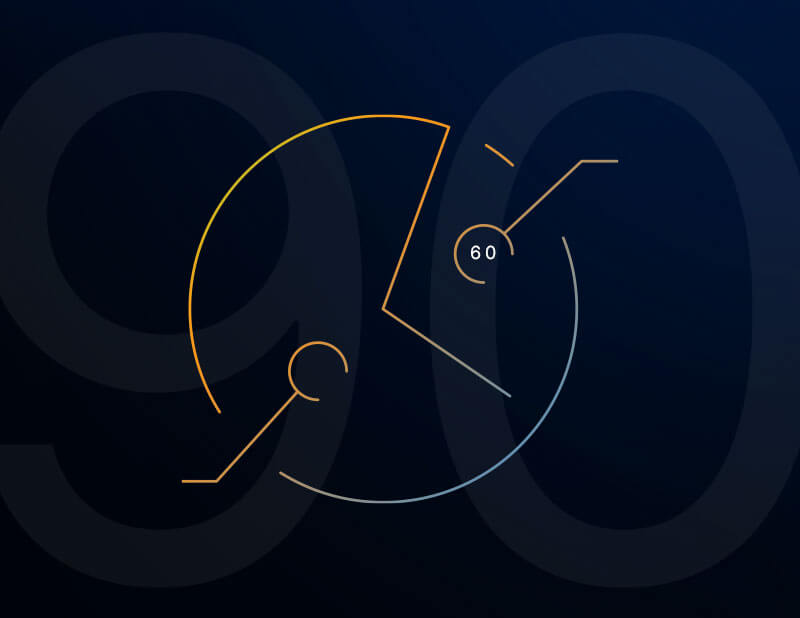90 Days to Precision Demand Marketing: Step 4
Step 4: MarTech Integrations
It’s time to connect your tech.
Now that you’ve gotten your data right, connected your demand channels, and added intent data to your demand efforts, it’s time to share that data across your systems––from Customer Relationship Management (CRM) to Marketing Automation (MA) and Customer Data Platform (CDP).
As you move toward a buyer-centric approach to enable precision demand marketing, your technology and data need to follow this approach as well. With clean data connected with intent and engagement data, you can easily identify accounts that are in market and people that are engaging. With this information you can turn your attention to your technology stack. You can begin to structure your technology stack to align to the account and buyer’s journey enabling marketing to align the right content to the right account or person in the right channel at the right time. This alignment of data and technology allows you to orchestrate a buyer-driven experience across all channels. From third-party content syndication to digital, advertising and events, you can begin to execute on true omnichannel precision demand marketing experiences.
For instance, you can connect intent and account data to precisely target your accounts with display advertising and third-party programs that align to the topics those accounts are researching. Both channels can drive back to smart digital experiences and nurture programs that adjust to where the person and account are in their journey.
Here is a simplified version of Integrate’s technology stack. You can see that I have aligned my different technologies to the buyer’s journey to give a deeper understanding of where the different pieces of technologies fit as it relates to how my demand team builds their marketing programs.
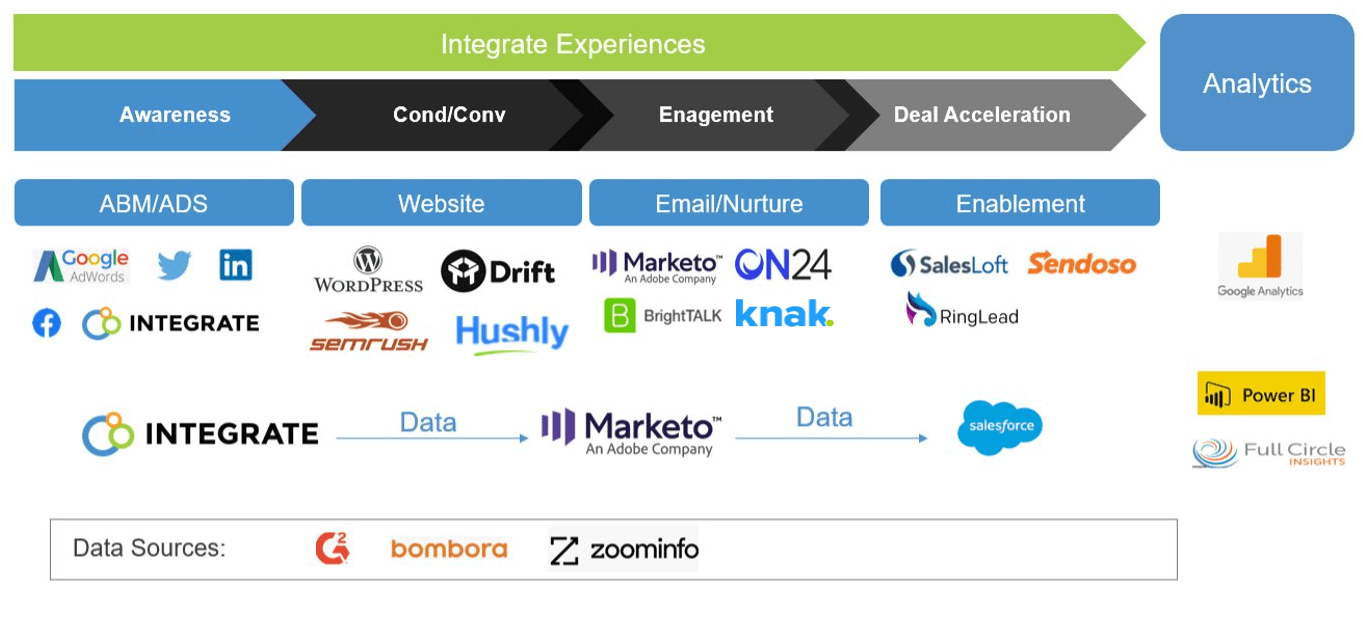
Using my marketing automation and CRM system data, I can partner with my demand team to help them execute on the buyer’s journey. Below you will see an example of a buyer’s journey that walks through the process of discovering what Integrate has to offer. This journey can be served up across many channels and it changes as the buyer traverses from channel to channel. This approach helps Integrate as an organization to focus on the one process that matters, and that is the buyer’s process.
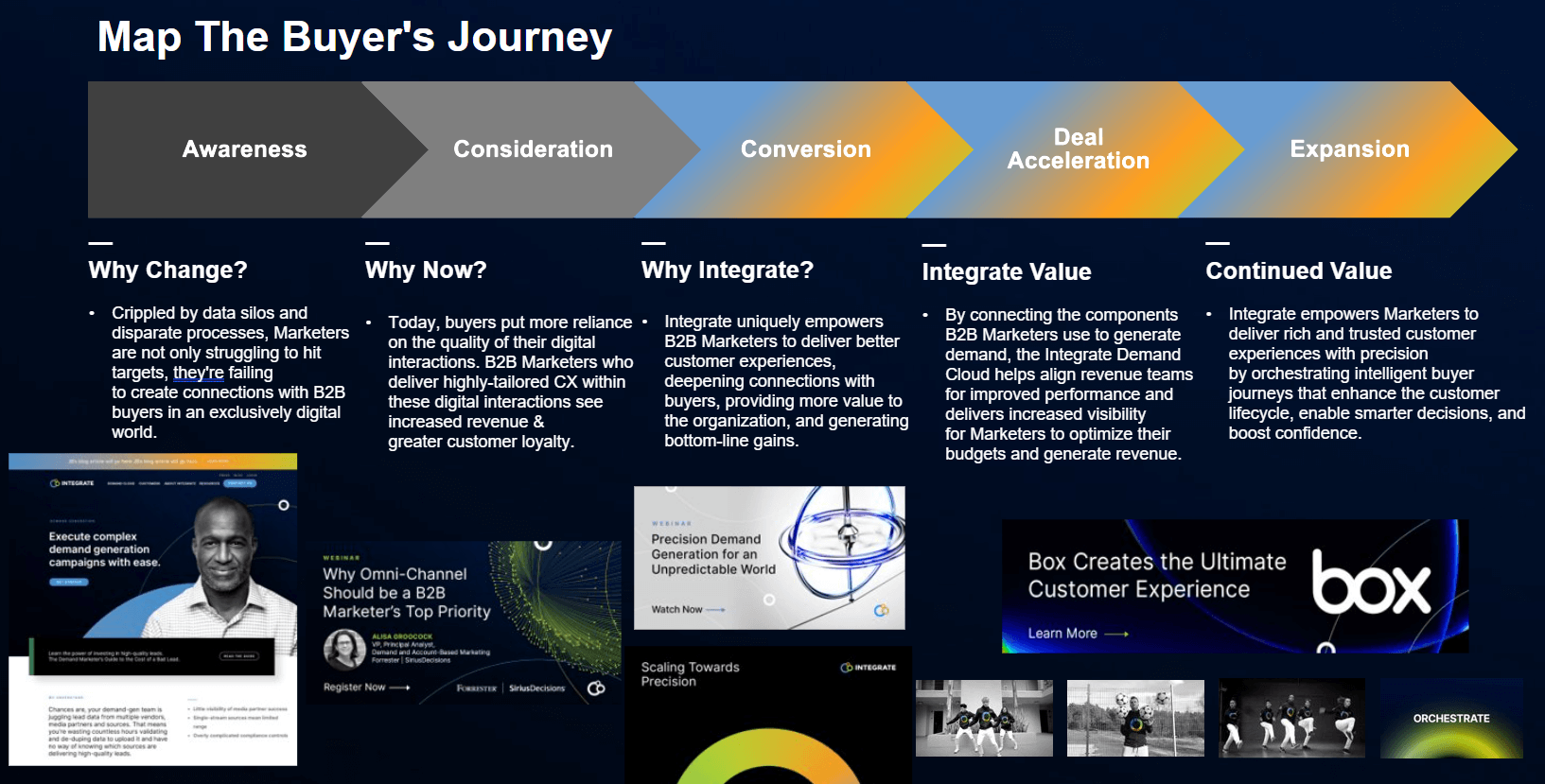
A Detailed Example
Let us take a closer look at how we would connect our technologies to the buyer’s journey. Below is a list of accounts currently researching topics that are relevant to Integrate. For this example, we have both intent data and engagement data, which allows us to put them squarely in the consideration stage of the buyer’s journey. If these accounts did not have engagement data, then we would place them in the awareness portion of the journey.

Awareness Stage
We use intent and engagement data to identify accounts that are in the awareness stream. Through Smart Lists and Salesforce Reports, this data is available to all the tools that support this stage of the journey. From content syndication to advertising, nurture programs, BOTs, and SDR cadences, all important channels know what accounts are in the awareness stage.
At this stage, the account or person is early on in their research or discovery and marketing should have minimal barriers to entry. We want to encourage engagement with our brand and content.
As a result, our ads, emails and social channels often drive back to ungated pages, blogs, product pages, or a landing page where the user can binge on content. In the example below, I am giving up multiple pieces of content right away. As users scroll, we nudge them to fill out a very short form, asking them to complete just two fields: “email” and “country.” With these two form fields, we get all the data we need on each person and account, and we are GDPR compliant. By focusing on clean compliant inputs through both 1st and 3rd party sources, it allows us to deliver the right content to the right account or person at the awareness stage of the journey.
This is a win for users, since we are giving them what they are looking for. It’s also a win for us, since we put the form at the bottom of the awareness asset.
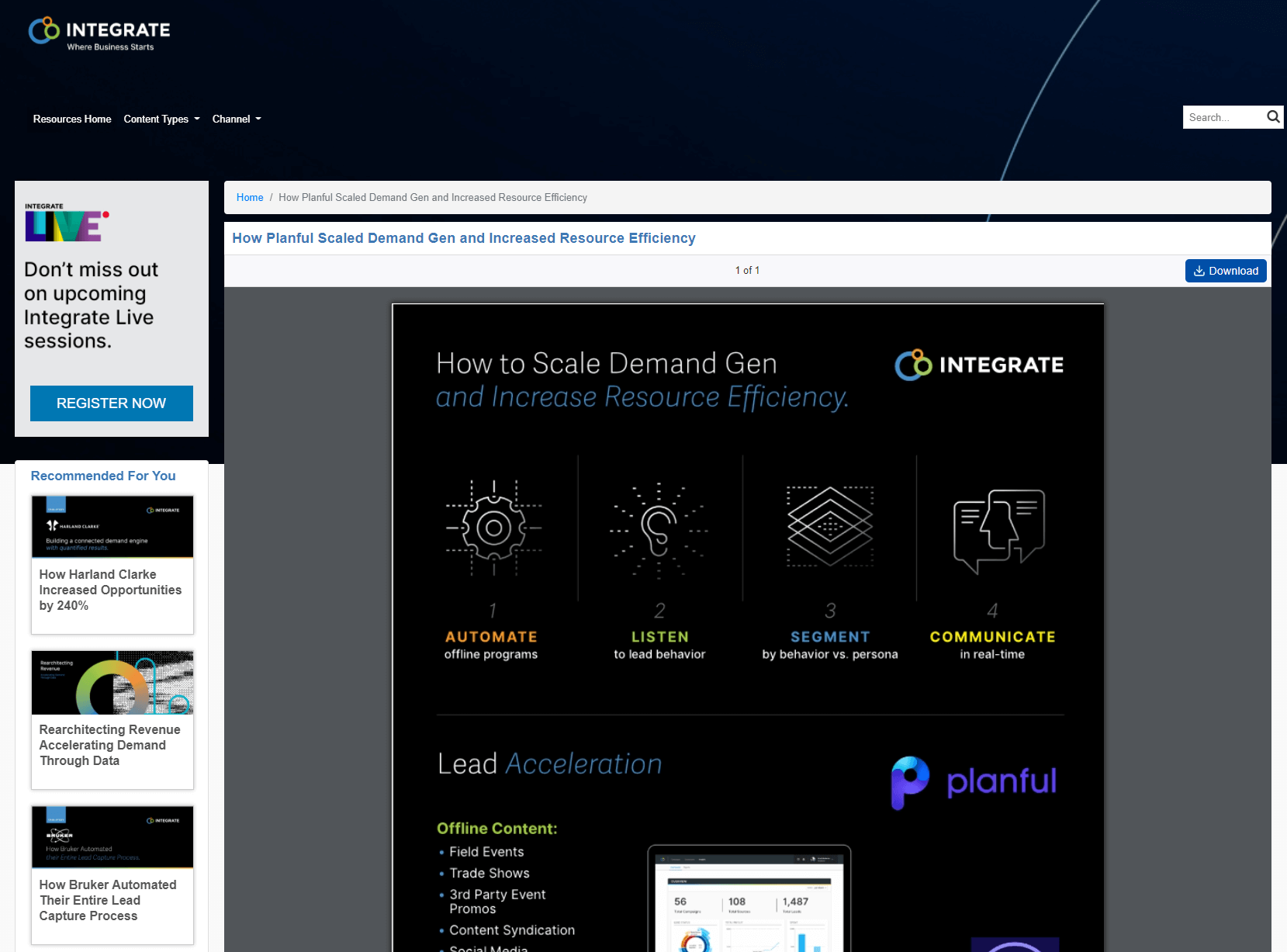
Once we have engagement, we hand off the account or person to the consideration stage of the journey.
Consideration/Conversion Stage
In this stage, we are much more focused on the conversion event. We are no longer driving to un-gated content and instead we leverage bingeable content experiences to drive the conversion event, as we did in the awareness stage. We do this through targeted and account-based landing pages. Targeted pages are usually focused on personas or topics of interest and account-based landing pages are specialized landing pages with highly customized content for a key account. At this stage we are using content engagement, smart lists, and reports to drive the experiences. The user or account will be targeted with similar messaging across all channels and then as the user engages, they will move further down the buyer’s journey across all channels.
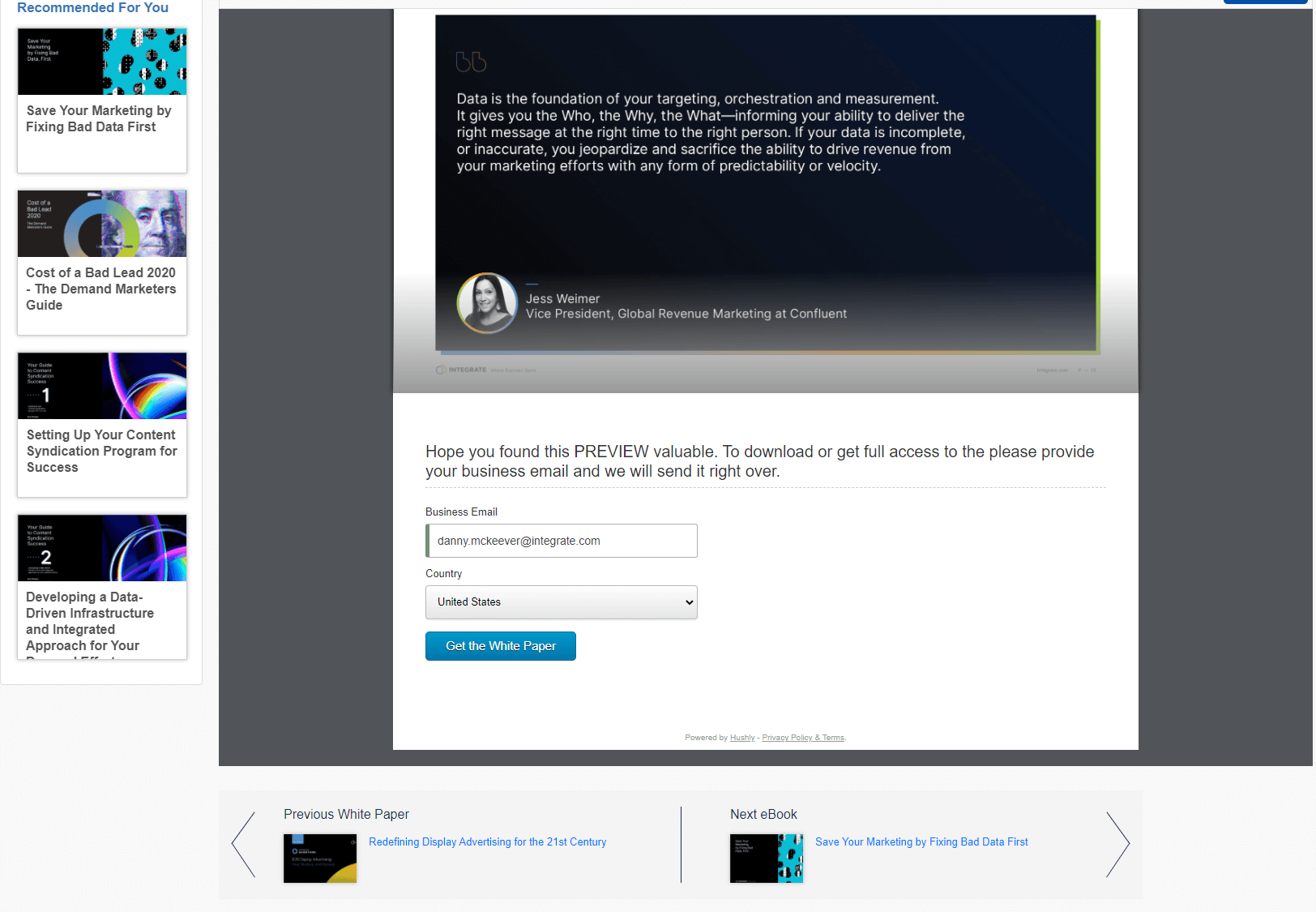
Engagement/Deal Acceleration
Like the top-of-funnel awareness, consideration, and conversion process, we use Full Circle Insights and our own Integrate Account-based Marketing (ABM) platform to track and identify accounts and people that are farther along in their buyers’ journeys. Below is a screenshot of how we understand where each user is in the journey. This allows us to feed the right content to the right person at the right time.
This example shows how we capture the response through the opportunity creation date as well as the user’s title. This data allows us to execute precision demand marketing programs and enable the best user experience.
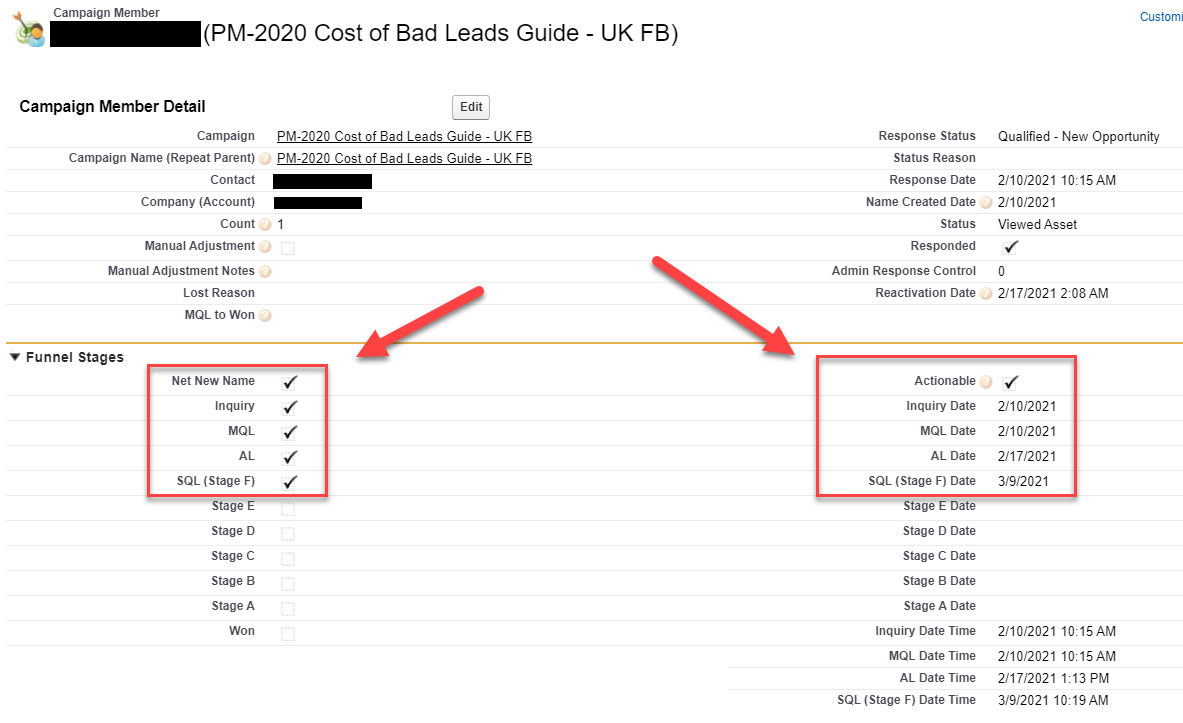
Marketing operations is one of the fastest growing and exciting spaces to be in. Things are always changing. Look at it this way…we have only 8000+ different tools and technologies to choose from. Eight thousand! By using the process outlined here–– taking time to get your data right, identifying which accounts are currently in-market, and aligning technologies to the buyer’s journey––you can stay focused on the next piece of tech you need and avoid the shiny object syndrome. In my next blog I will discuss how to measure marketing’s impact on the business. In the meantime, you can review my previous blogs in this series here.
